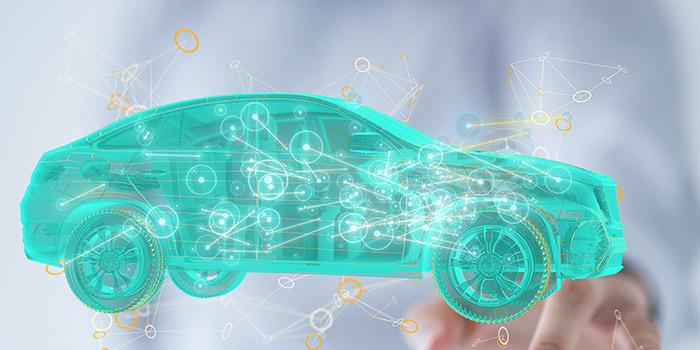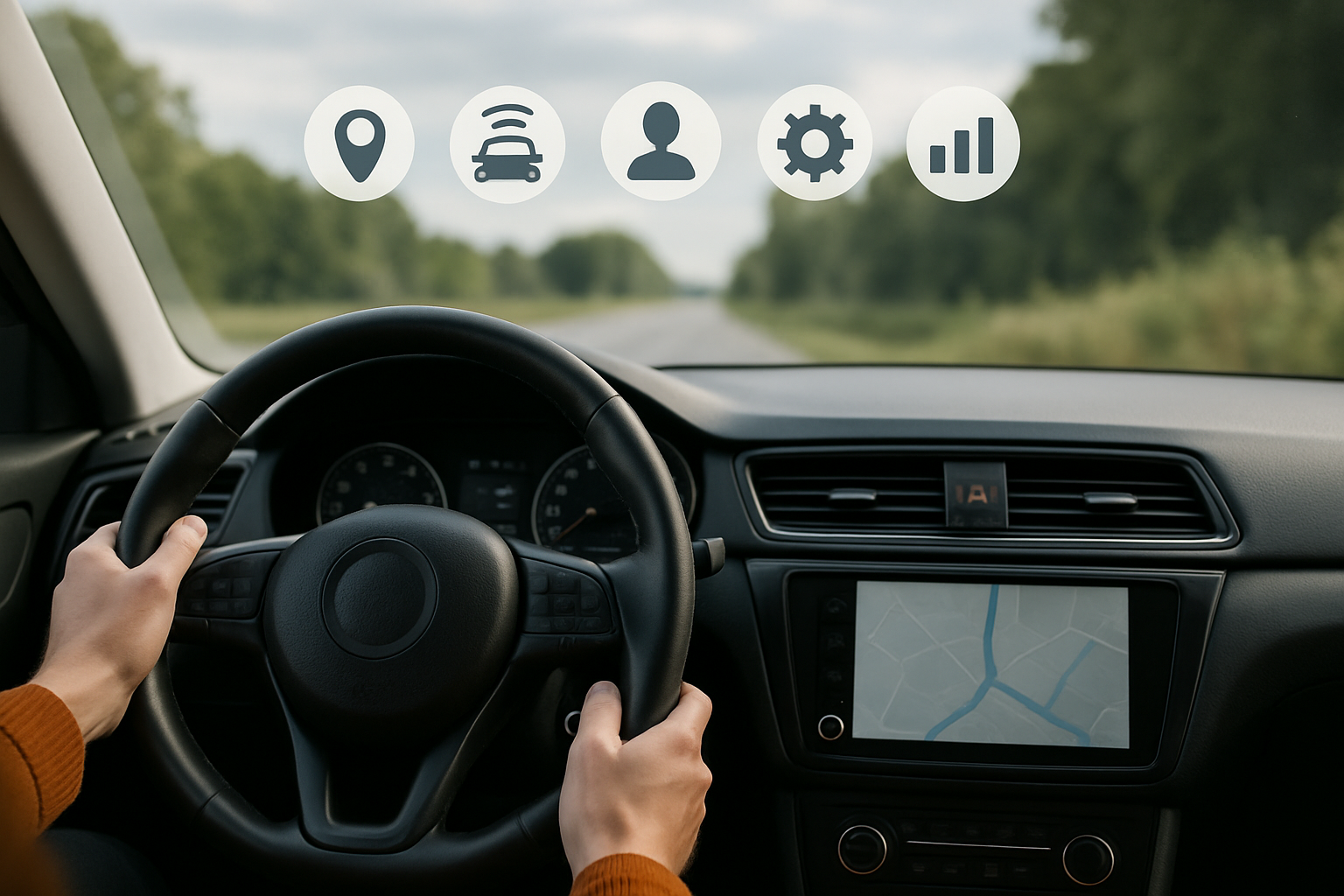By Ken Wysocky
The emergence of software-defined vehicles (SDVs)–expected to become more common within the next decade–will make driving a safer experience, but also more comfortable, customizable and efficient for consumers, an industry expert predicts. Moreover, this technology also could profoundly affect the overall auto industry by significantly lowering barriers to market entry for new auto manufacturers. This could enable technology-centric companies to morph into major players in the car-manufacturing arena, says Yagil Tzur, vice-president of product at Tactile Mobility, a software-development company.

vice-president of product
The Israel-based company is at the forefront of developing SDV technologies. The company develops what’s known as “virtual sensors,” which collect data from vehicles in real-time while they’re driven. That data then gets uploaded to a cloud-based platform via communication channels provided by OEMs. From there, “Tactile Mobility” analyzes the anonymized data and uses it to improve the driving experience. The original raw data then is discarded, Tzur told MOTOR.
“It basically marks a shift in the auto industry from electro-mechanical domains to software as the most centric part of vehicles,” he says. “This is a marked difference from even the recent past, where software is focused primarily on specific vehicle functions, such as lane-deviation, emergency-braking and adaptive cruise-control technology–or even infotainment systems.”
“Software-defined vehicles are positioned to sense vehicle dynamics… and all of this unlocks automated driving functions, new car-insurance models, improved safety and better customization of vehicles to achieve comfort,” according to Tzur.
Technology Evolution
Tactile Mobility provides OEMs with embedded-software packages for vehicles. The company has established agreements with Porsche and BMW to install its technology in their next-generation cars.
The virtual sensors in these packages collect data from conventional sensors in a vehicle’s internal network, says Tzur. “Today’s vehicles include many sensors that transmit a lot of data. Tactile Mobility takes advantage of all that data to generate insights that weren’t available before and that improve existing knowledge of the vehicle.” That data is analyzed in real-time via machine-learning algorithms, which can help the vehicle adjust to various conditions and improve vehicle functions, Tzur notes.
“For example, our technology can take signals from common sensors–data such as the steering angle, wheel speed and acceleration–and analyze a vehicle’s grip on a road surface in real-time,” he explains. “Different vehicle functions then can take advantage of this additional and important data to improve existing vehicle functions, like helping a braking system operate within optimal parameters.
“The insights we provide help the vehicle operate more safely, more efficiently and with more passenger comfort while driving,” he adds. “For example, our software may indicate the road ahead is rough, so it can provide indications to the active suspension, which can then act accordingly and provide a balance between the safety and the comfort of the vehicle.”
Rich Data Collection
The virtual sensors generate two different layers of data. One is known as surface DNA and the second is vehicle DNA.
Surface DNA relates to the physical and functional characteristics of roadways. The physical side includes items such as potholes, the severity of cracks, how the surface is banked, its curvature and so forth, while the functional side defines the behavior of the roadway and how it changes during varying weather conditions, Tzur notes.
“For instance, during rain, it can indicate potential for hydroplaning because of poor drainage,” Tzur explains.
To provide data about the surface DNA, Tactile Mobility is in the process of collecting highly detailed information from its sensors about roadways in Europe and North America.
“The end goal is to provide a highly updatable map of road conditions that can tell vehicles in real time what lies ahead–something we call the ‘electronic horizon,’” Tzur says. “That same data can be viewed by road authorities and municipalities to optimize road-maintenance operations. It also will be highly valuable to vehicle fleet managers and insurance companies that seek to understand these conditions.”
Insurance companies, for instance, can use this data to provide customers with usage-based insurance that will optimize how the companies underwrite policies by collecting data about where people drive and their driving styles, Tzur says. “Insurance companies can analyze data from both the surface and the vehicle DNA… and optimize insurance policies that best balance the risks for the insurance company and the cost to vehicle drivers,” he says.
Predictive Vehicle Maintenance
Vehicle DNA centers on data that informs drivers about the condition of their vehicles.
“With vehicle DNA, there’s a digital twin of each and every vehicle on the road,” Tzur explains. “This digital twin is a very important part of a software-defined vehicle because it can predict things like tire wear, how the steering sub-system is working and so forth.
“It’s a very profound part of a software-defined vehicle because it compiles data in the cloud that can be compared to data from similar vehicles… data that can be unlocked to predict part failures or when a vehicle will need maintenance,” he continues. “It identifies trends and extrapolates from them things that could happen.”
In addition, Tactile Mobility’s technology will make vehicles much more customizable, which in turn will make driving more enjoyable. “The vehicles will meet the average driver’s needs in a better way,” It can be customized for various drivers–different family members, for example. The software-defined vehicle will basically enable people to turn vehicles into something much more customizable and comfortable by adjusting to every driver’s needs and preferences.”
No Imminent Shift
How long might it take for this next driving evolution to gain traction? Tzur estimates five to ten years, though he notes that Tesla vehicles are already there.
“A Tesla is basically a computer on wheels,” he says. “It has a lot of processing power–the industry in general is going to follow that route.”
The result will be vehicles that will be operated by 200 or perhaps even 300 hundred million lines of computer code. In fact, the automated vehicles of the future will contain more lines of code than the ultra-sophisticated Lockheed Martin F-35 fighter jets, which feature a mind-boggling array of advanced technology.
“The reason for this is very simple: Driving in an urban environment is much more complex that flying in the sky,” he says.
Disruptive Technology
As vehicles become more software-centric and the internal-combustion engine (ICE) is phased out, advanced technologies will thrust new players into the car-manufacturing industry, Tzur predicts.
“It will cause a very profound effect on the industry. Car manufacturers with long histories and legacies will cease to exist because the focus and expertise will shift from the car arena–developing engines and gear boxes, for instance–to a completely different domain.
“Technology companies such as Apple, Sony and Google have strong expertise and assets,” he continues. “In addition, the transition from ICE vehicles to electric vehicles (EVs) will result in a drastic reduction in car parts–from roughly 30,000 to about 10,000–and all the parts can be outsourced.”
The end result? More companies will be able to buy car parts and design vehicles, he suggests.
“Designing and manufacturing vehicles will occur through an integration of companies rather than just one company that design and manufactures vehicles,” Tzur states. “It’s my personal belief that within ten years, the entire automotive industry will be completely different. “New companies will emerge and some existing car companies will no longer exist or will be acquired by new players… because the conversion from ICEs to EVs, which will be so much simpler to make, will lower the barriers to market entry,” he asserts. “This technology will completely disrupt the auto industry.”

Originally published on: motor.com



